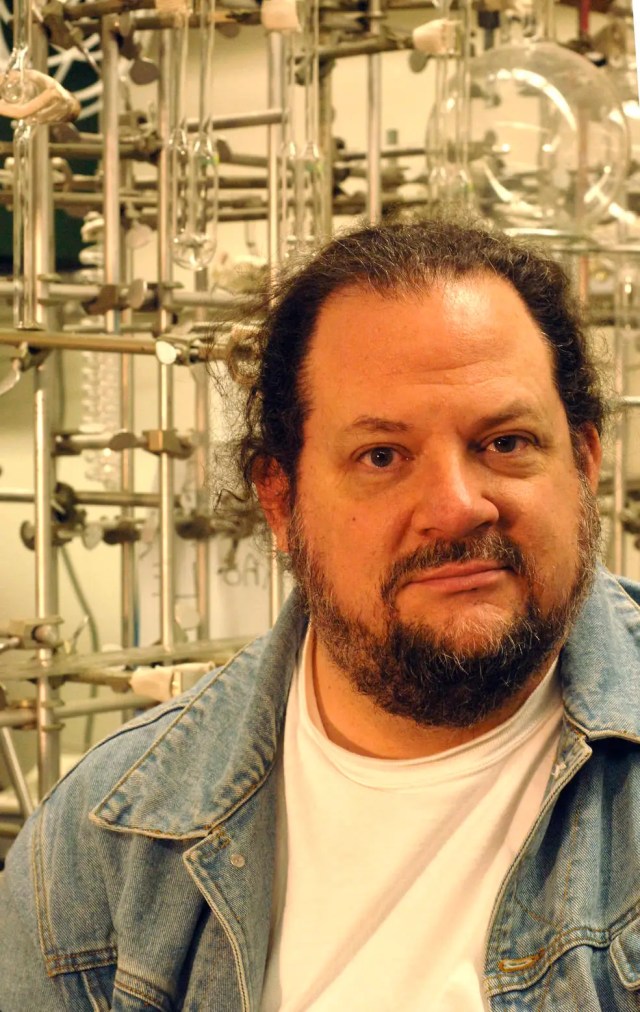
David Summers
Senior Research Scientist
Affiliation: Coop/SETI
Email: David.P.Summers@nasa.gov
Phone: (650)604-6206
Professional Biography
Dr. Summers has an extensive background in Astrobiology and C1 chemistry, photochemistry, catalysis, surface chemistry, and electrochemistry. He has several years experience in electrochemical CO2 reduction/CH4 oxidation. He has worked on experimentally modeling various aspects of the abiotic chemistry/fixation of nitrogen and carbon for over 15 years including a paper in Nature on the reduction of nitrate/nitrite to ammonia and modeling of the kinetics of reactions in the early ocean. He has been involved in the Ames Martian meteorite program, particularly with regard to sample handling. Dr. Summers has been working on the application of 125I labeling and Multiphoton Detection to a number of problems of NASA interest, including protein detection for the Biomolecular Systems Research Program, to help understand the responses of organisms to environmental changes, and to detect microbial metabolism, for the NAI Director’s Discretionary Fund to understand survival in extreme environments. He has been involved in the study of abiotic isotopic fractionation as a benchmark for the detection of life. As part of the SETI institutes participation in the Astrobiology Institutes, he experimentally simulated the prebiotic fixation of atmospheric nitrogen on Mars. Dr. Summers works at NASA Ames research center under a cooperative agreement between NASA and the SETI Institute. His current projects involve studying how energy transduction may have occurred in the prebiotic or protobiological stages of life and to (with 125I labeling) detect microbes and microbial contamination for the search for life and planetary protection.
Education
1979-1984: Massachusetts Institute of Technology; Ph. D. Inorganic Chemistry
1975-1976: State University of New York at Albany; B.S. Chemistry
Research Interests
Astrobiology, Prebiotic Chemistry, Search for Life, Detection of Life, Section of Microbial Metabolism, Planetary Protection.
Select Publications
– “The Electrochemical Reduction of Aqueous Carbon Dioxide at Electroplated Ru Electrodes. Investigations toward The Mechanism of Methane Formation.” Karl W. Frese Jr. and David P. Summers, Catalytic Activation of Carbon Dioxide, ACS Symposium Series No. 363, p. 155-170, American Chemical Society: Washington, DC, 1988.
– “Mechanistic Aspects of the Electrochemical Reduction of Carbon Monoxide and Methanol to Methane at Ru and Cu Electrodes.” David P. Summers and Karl W. Frese Jr., Electrochemical Surface Science, Molecular Phenomena at Electrode Surfaces, ACS Symposium Series No. 378, p. 518-527, American Chemical Society: Washington, DC, 1988.
– “Reduction of Carbon Dioxide to Methane at Copper Foil Electrode.” Karl W. Frese Jr. and David P. Summers, Electrochemical Society Symposium Series, Electrochemical Society: Pennington, New Jersey, 1988.
– “Prebiotic Ammonia from Iron(II) Reduction of Nitrite on the Early Earth.”, David P. Summers and Sherwood Chang, Nature, 365, 630-633, 1993.
– “Sources and Sinks for Ammonia and Nitrite on the Early Earth and the Reaction of Nitrite with Ammonia”, David P. Summers, Origins of Life and Evolution of the Biosphere, 29(1)33-46, 1999.
– “Ammonia Formation by the Reduction of Nitrite/Nitrate by FeS: Ammonia Formation under acidic conditions”, David P. Summers, Origins of Life and Evolution of the Biosphere, 35(3)299-312, 2005.
– “Nitrogen Fixation on Early Mars and Other Terrestrial Planets. Experimental Demonstration of Abiotic Fixation Reactions to Nitrite and Nitrate.”, David P. Summers and Bishun Khare, Astrobiology, 7(2)333-341, 2007.
“The Abiotic Fixation of Nitrogen on Terrestrial Planets: Experimental Results and their Implications.”, David P. Summers, Bishun Khare, and Ranor C. Basa, Invited Talk, COSPAR 2008.
-“Energy Transduction Inside of Amphiphilic Vesicles: Encapsulation of Photochemically Active Semiconducting Particles”, David P. Summers & Juan Noveron, Origins of Life and Evolution of the Biosphere, 39(2)127-140, 2008.




























